Cheap and safe methods for creating heating in the garage with your own hands
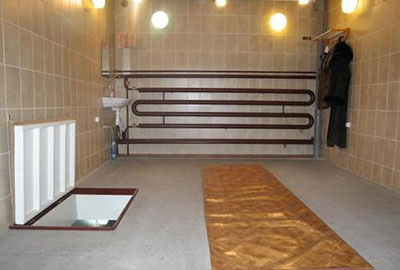
A garage is not only a place to store a car, but also workshop and a place for men to hang out.
It is not difficult to install a garage heating system on your own. The most effective are gas, electric heaters or a traditional stove. They provide sufficient heating and safe to use.
Heating system with water coolant
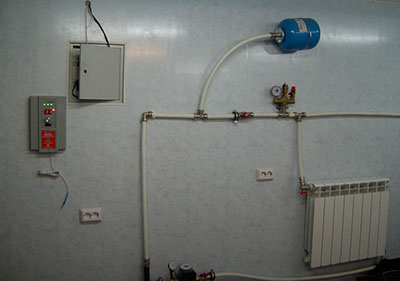
The operating principle of any water circuit is based on the transfer of thermal energy from the boiler or furnace to the heating radiators. The liquid is moved by means of a pump or by convection method.
It consists of the following elements:
- heat exchanger for heating water;
- main pipes;
- circulation pumps;
- metal batteries or registers;
- expansion tank;
- pressure valve, drain taps and filter.
The coolant used is softened water or antifreeze based on ethylene glycol.
How to do it quickly and cheaply?
It is not difficult to make a water heating system for a garage with your own hands. To do this you will need calculate the required battery power for the garage and the heat output of the heating element. For the water heating system, use:
- electric heating elements;
- electric boiler or solid fuel boiler;
- a potbelly stove with a heat exchanger in the firebox;
- waste oil furnace;
- economizer on the stove chimney.
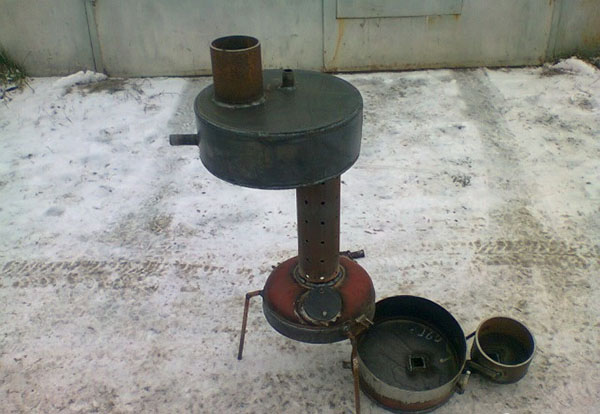
Photo 1. A waste oil furnace is well suited for a garage's water heating system.
The simplest electric boiler for a garage is easy, cheap and quick to make from a pipe with a diameter 100-150 mm, placed vertically. They are installed inside Heating element and two water pipes.
Having chosen a place for the boiler or stove in the garage, proceed to laying pipes to the radiators. It is better to take pipes from polypropylene (metal-plastic) - they do not rust, are easy to install and connect. Heating batteries in the garage are placed on the walls, leaving a small gap for air circulation. At the highest point, a valve is cut in to bleed air.
Single-circuit system will work without an additional pump, due to thermal convection. A more complex scheme will require a circulation pump. The expansion tank will not allow air to enter the system when the liquid level drops due to natural evaporation.
Attention! It is not recommended to use open systems with antifreeze in the garage due to harmful ethylene glycol fumes.
Advantages and disadvantages
Advantages of water heating of a garage:
- comfortable constant temperature;

- keeps warm for a long time after switching off;
- absence of ash, dust and dirt;
- ease of use and the possibility of automatic switching on;
- The use of antifreeze makes the system year-round.
Cons:
- water freezes in winter and destroys pipes and radiators;
- possibility of leakage;
- complexity of installation and sealing of the circuit;
Gas heating of garages
Gas pipelines are not available everywhere, but if such an opportunity exists, then there is no alternative to this fuel in terms of cost and efficiency. In some cases it is possible use of imported gas in cylinders.
Boiler types
Gas heating systems for garages are available 3 types:
- gas boilers with a burner in the firebox and a heat exchanger for liquid coolant;
- gas convectors, using directly the energy of fuel combustion in a special chamber;
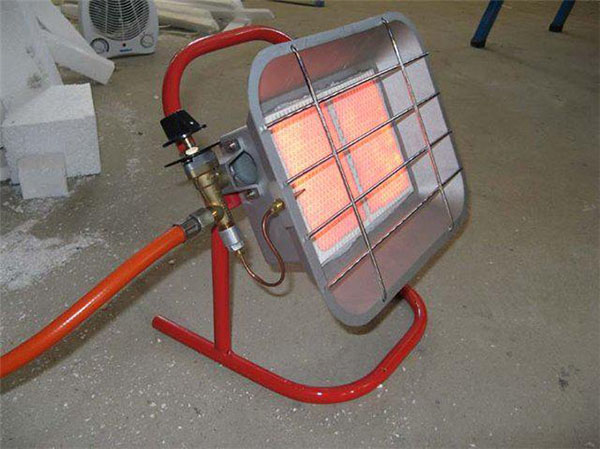
Photo 2. Infrared gas floor heater, installed away from flammable liquids.
- infrared gas installations.
Important! It is not possible to manufacture equipment for such heating independently. All units and parts must have factory origin and be certified.
The device of a convection gas boiler consists of a combustion chamber with a built-in convector and a special double chimney that removes combustion products into the pipe. Due to the system of air intakes, supply of oxygen to the combustion site and thermal energy is distributed throughout the entire room.
Modern gas installations have a thermostat and automatic temperature control. With its help, fuel consumption is reduced up to 0.5–1 liter per hour. Ceiling height limitation - 3 metersAt higher altitudes, air masses will mix worse.
The boiler is installed away from flammable liquids and materials. The placement can be wall or floor mounted. The gas cylinder is placed outside the garage in a special cabinet, and a shut-off valve must be installed on the main gas pipeline.
Pros and cons
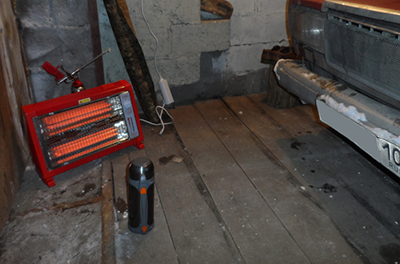
Advantages of gas for heating:
- high efficiency;
- low cost;
- compactness the entire installation;
- high heat output immediately after switching on;
- factory boiler safety;
- ease of use and mobility.
Disadvantages of gas heaters:
- the need to comply increased precautions;
- at open installations combustion products enter the surrounding air;
- difficulties with constant refilling of cylinders;
- Some models require electricity.
From electricity
All garage heaters that use electricity operate on the principle of an electric boiler or infrared heating element. Boilers come in 3 types: Heating elements, electrode, induction. They are connected to the water heating circuit and are used only for heating the coolant. Such a system is well suited for continuous long-term use.
Infrared panels are placed on the walls and ceiling of the garage. They emit heat in a spectrum invisible to the eye and begin to heat immediately after switching on. Such elements, as well as fan heaters, are ideal suitable for rare visits to the garage for repairs.
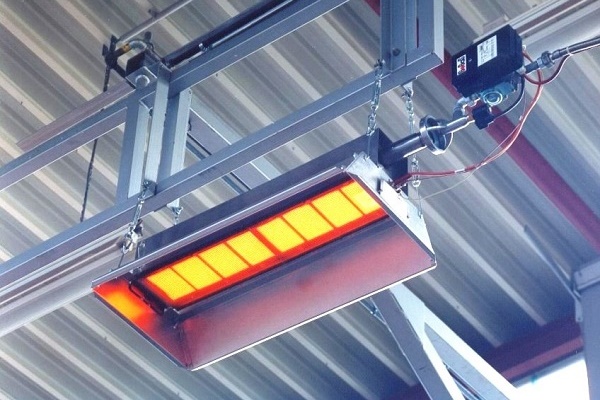
Photo 3. A ceiling infrared heater in a garage, powered by electricity, warms up the room immediately after being turned on.
It is not difficult to install an electric boiler or infrared panels yourself. They are pre-selected according to power. Per 1 square meter a minimum of 0.1 kW, and for a standard garage about 3 kW thermal power.
There is a rule when installing electric heating devices: several less powerful sources will heat a room better than one large one.
Important! Use is not allowed homemade devices and "goats", they are the ones who often cause fires.
Advantages and disadvantages
Advantages of electric heating:
- ease of installation;
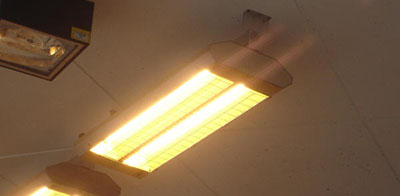
- very high efficiency of 98–99%;
- compactness of the boiler and panels;
- using automatic switching on will help save electricity;
- no chimney required;
- no combustion products;
The disadvantages are related with high electricity prices and the instability of its supply to garage cooperatives. Such a system cannot be called completely autonomous.
The most affordable and economical way to install it yourself
The simplest and most economical way to heat a garage is with a regular metal potbelly stove. They are sold in the store, but you can make it yourself from scrap materials. It will be heated with firewood, coal, wood waste.

Sheet metal is required for manufacturing thickness from 3 mm or a barrel of suitable size, steel corners, reinforcement, thick chimney pipe. Tools: welding machine, grinder, drill.
The order of actions is as follows:
- We cut the sheet into blanks for the bottom and walls, and in the barrel we cut holes for the door, ash pan and pipe. The bottom is made of the thickest metal so that it does not burn through.
- We weld the resulting structure. At the same time, we install grates or a lattice made of reinforcement. We weld the legs to the body. The stove made of a barrel can be located horizontally and vertically.
- We install doors and a damper on the chimney.
- Installing the chimney in place. We seal the joint or weld it along the perimeter. Pipe diameter not less than 12 cm to ensure good traction, and the thickness of the walls 3-5 mm at the base. The top of the chimney can be made of thin material, its overall height should be 4 meters and above.
A wood-burning iron stove heats up quickly and cools down just as quickly. To slightly increase its efficiency, screens are welded to the side walls or heat exchanger on the chimney. You can also cover the stove with bricks.
Pros Potbelly stoves are made up of cheap fuel and ease of manufacture. It has many more disadvantages: problem with firewood and ash, need to regularly add fuel, uneven heating, fire hazard.
Requirements
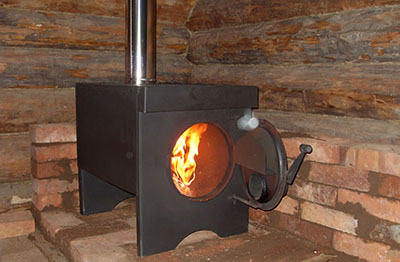
The garage heating system differs from the house heating system, it is characterized by:
- reliability and ease of maintenance;
- adaptability to sudden temperature changes;
- ability to operate independently of electricity;
- quickly reach the set thermal mode;
- economy and the possibility of using cheap fuel.
Insulating the ceiling, walls, and garage doors with any suitable material will help to retain heat and reduce heating costs in the garage. Ventilation is essential to remove condensation and maintain the microclimate. For car repair and maintenance in winter, the temperature is quite sufficient 10–15 °C.
Attention! A good exhaust system in a garage heated by a potbelly stove and a liquid stove is a significant safety feature. It is reduced risk of carbon monoxide poisoning.
Useful video
The video shows a step-by-step process for assembling a homemade potbelly stove for a garage.
How to choose a device?
The options considered are far from the only sources of heat in the garage. Furnaces on waste oil, long-burning boilers, and heaters have become widespread.
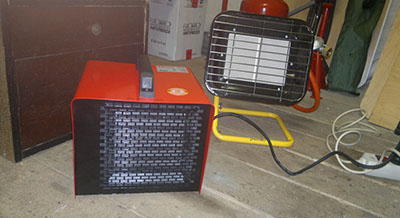
Most of the simplest heating devices are easy to make yourself, with minimal experience in welding and metalworking.
Boilers and gas equipment will have to be purchased - safety depends on it, and they don't skimp on it.
The choice is made depending on operating conditions and the availability of an inexpensive source of fuel or electricity. The cost of installation and assembly is also important - for rare use, a small stove in the garage or wall infrared panels are enough.






